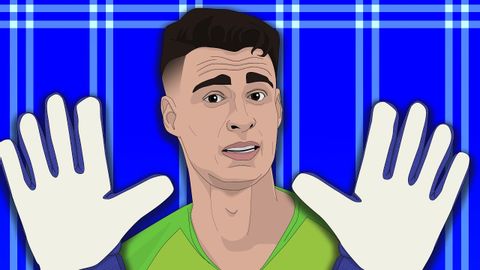
Phụ đề & từ vựng
What happened to Chelsea's £71.6m goalkeeper?
00
Louis Clarke đăng vào ngày 01 tháng 07 năm 2022Yêu thích
Từ vựng video
vulnerable
US /ˈvʌlnərəbəl/
・
UK /ˈvʌlnərəbl/
- adj.có thể bị tổn thương; trống để tấn công hoặc tổn thương;dễ bị làm hại,tổn thương;dễ bị tổn thương, yếu đuối;dễ bị ảnh hưởng, dễ bị thuyết phục;cần được chăm sóc đặc biệt, yếu thế;dễ bị chỉ trích;(Trong trò chơi bài, đặc biệt là bridge) ở vị trí mà hình phạt cao hơn và tiền thưởng lớn hơn
B1 trung cấp
Thêm quote
US /kwot/
・
UK /kwəʊt/
- n. (c./u.)câu trích dẫn;lời trích dẫn
- v.t.định giá;trích dẫn (đoạn văn...);niêm yết (chứng khoán)
A2 sơ cấpTOEIC
Thêm average
US /ˈævərɪdʒ, ˈævrɪdʒ/
・
UK /'ævərɪdʒ/
- n. (c./u.)giá trị trung bình
- v.t.tính trung bình
- adj.trung bình
A2 sơ cấpTOEIC
Thêm Dùng năng lượng
Mở khóa toàn bộ từ vựng
Mở khóa phát âm, giải thích và bộ lọc
